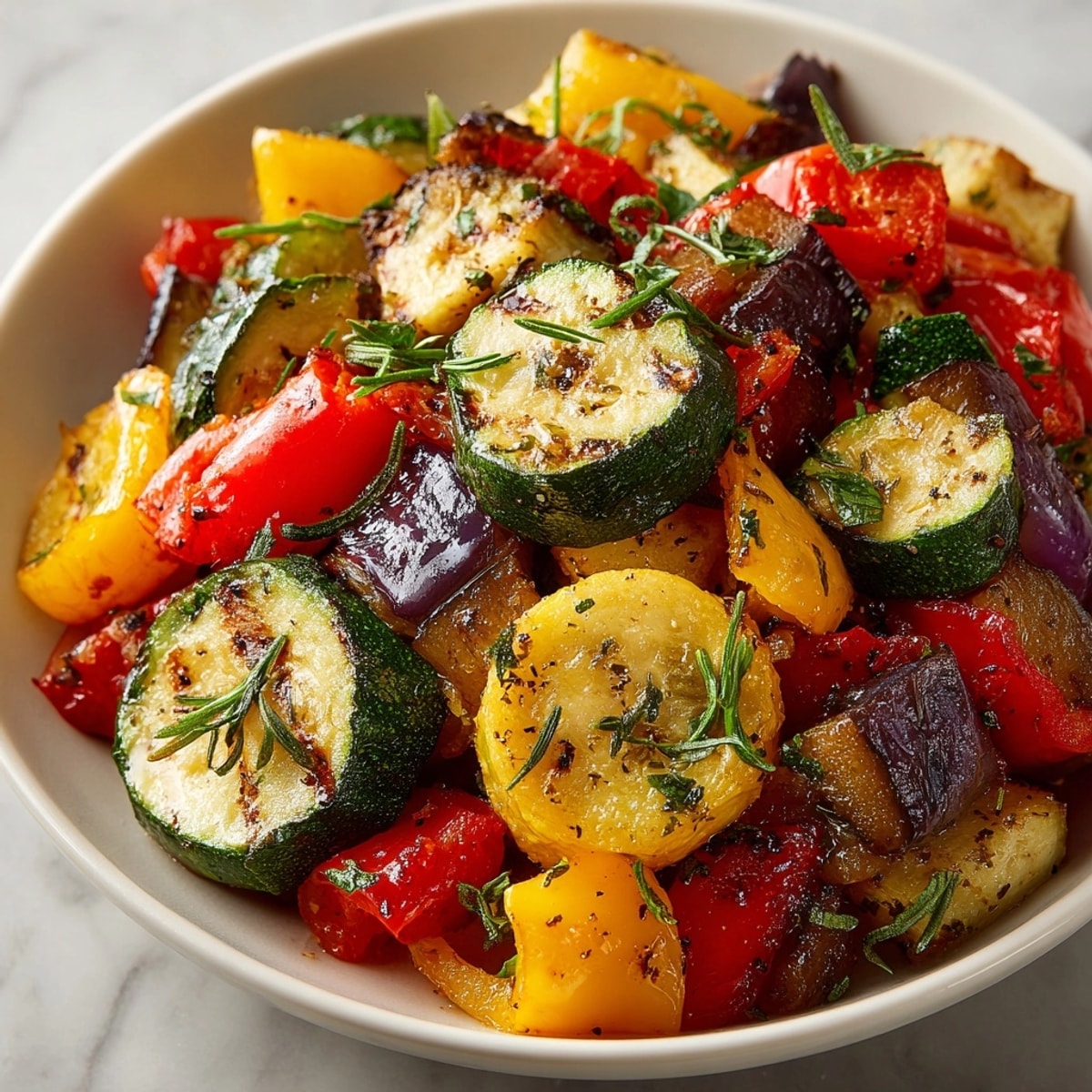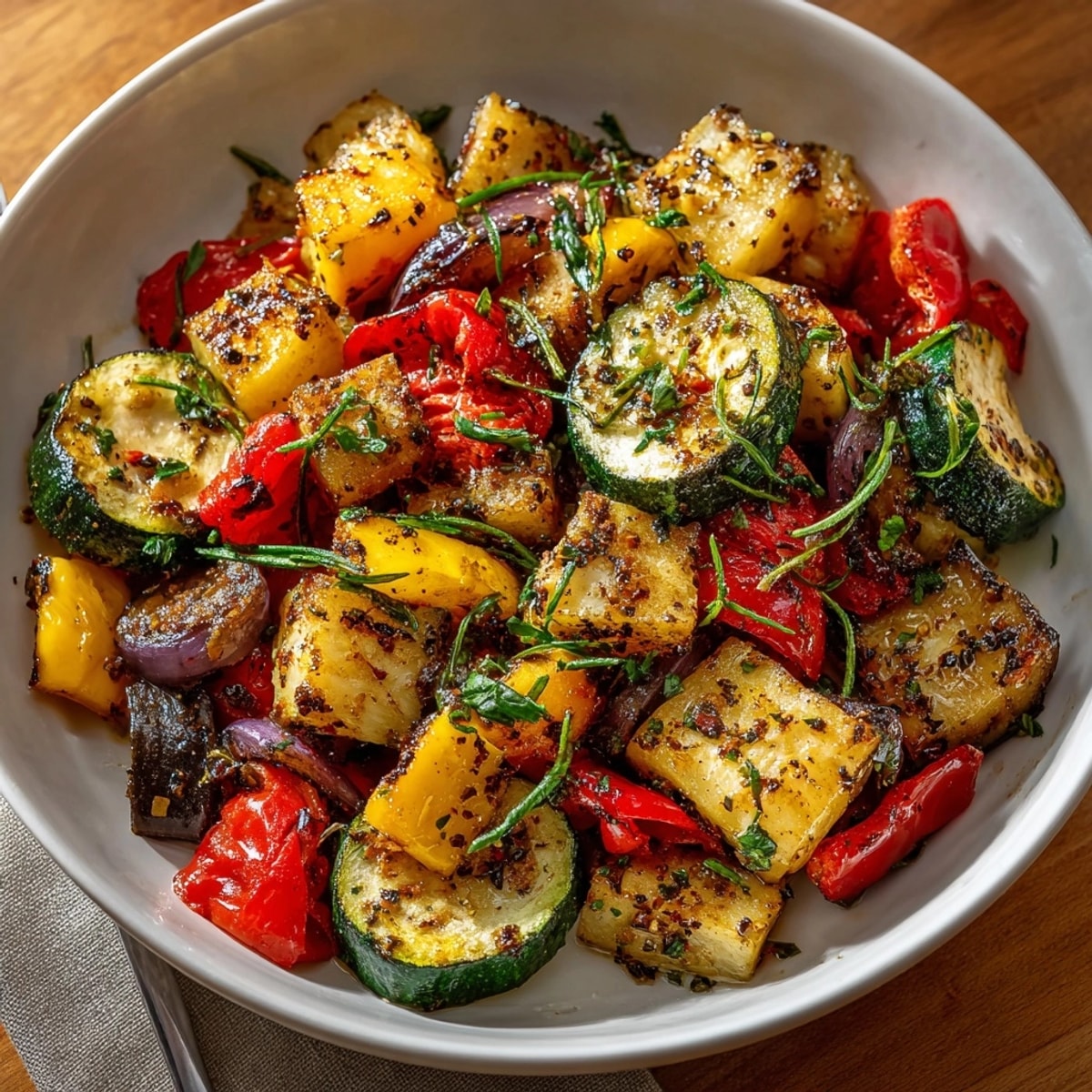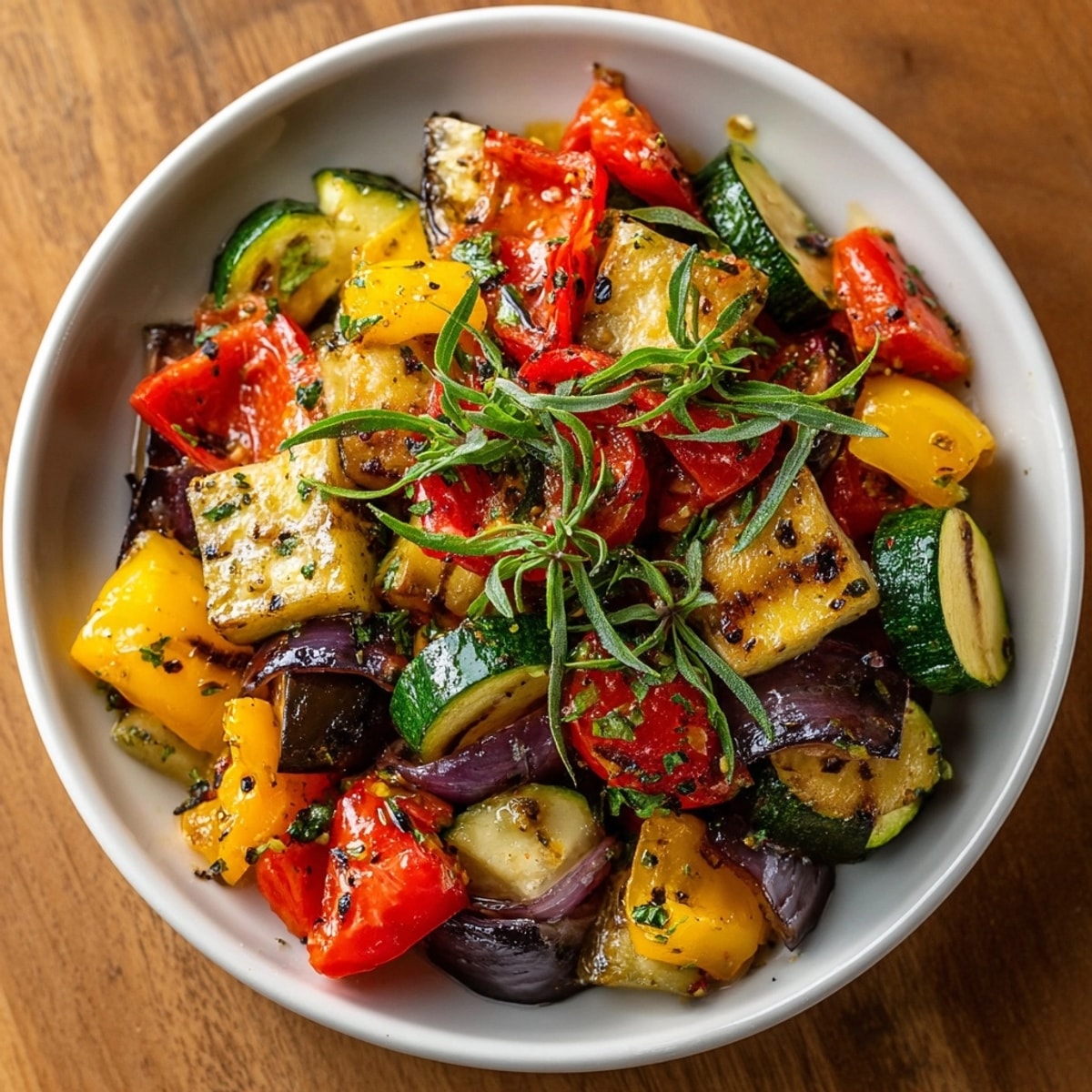 Save
Save This rustic ratatouille celebrates the bounty of summer vegetables, slow-cooked to create a harmonious medley of flavors and textures. The traditional Provençal dish transforms humble garden produce into a memorable meal that tastes even better the next day.
I first learned to make ratatouille while traveling through southern France, where a local grandmother showed me how layering the vegetables properly creates distinct flavors rather than a mushy vegetable stew. Twenty years later, I still make it her way, and the scent of those herbs transports me back to that sunsoaked Provençal kitchen.
Ingredients
- Eggplants: carefully salted and drained to remove bitterness and ensure proper texture
- Zucchini and yellow squash: selected for firmness and minimal seeds for best texture
- Bell peppers: both red and yellow for sweetness and visual appeal
- Fresh tomatoes: preferably vine ripened for natural sweetness and acidity
- Extra virgin olive oil: use the best quality you can find as the flavor shines through
- Fresh herbs: including thyme rosemary oregano and basil for authentic Provençal flavor
- Sea salt: enhances the natural sweetness of the vegetables
- Garlic: provides aromatic depth that mellows during slow cooking
Instructions
- Prepare the eggplant:
- Properly preparing eggplant is crucial for ratatouille success. Cut eggplant into uniform 1inch cubes, then toss with salt in a colander. Allow to sit for a full 20 minutes this draws out moisture and bitterness. Afterward, thoroughly pat dry with paper towels to ensure proper browning. Skipping this step results in soggy bitter eggplant that ruins the entire dish.
- Create the flavor base:
- Heat olive oil in your Dutch oven over medium heat until it shimmers but doesn't smoke. Add diced onion and cook for 5 minutes, stirring occasionally until they become translucent but not browned. This creates a sweet foundation for the other vegetables. Add minced garlic and cook for exactly one minute until fragrant be vigilant as garlic burns quickly and becomes bitter.
- Layer the vegetables:
- Add bell peppers first, cooking for 5 minutes to soften slightly. Their natural sugars will begin to release, adding complexity. Next, add the prepared eggplant, zucchini, and yellow squash, drizzling with remaining olive oil. Gently toss everything to ensure even coating. Finally, add chopped tomatoes and herbs, nestling the herb sprigs into the vegetable mixture where they'll infuse flavor during the slow cooking process.
- Slow roast to perfection:
- Cover your Dutch oven with a tight fitting lid and transfer to the preheated oven. The 40minute baking time at 375°F allows the vegetables to slowly release their juices and meld flavors while maintaining their individual integrity. Stir gently halfway through cooking to ensure even heat distribution. The vegetables should be tender when pierced with a fork but still hold their shape not mushy.
- Finish with fresh herbs:
- Remove from oven and discard the bay leaf and woody herb stems. Gently fold in the torn fresh basil leaves while the ratatouille is still warm. The residual heat will release the basil's aromatic oils without cooking away its bright flavor. Taste and adjust seasoning now the vegetables will have released their natural juices, possibly requiring additional salt.
 Pin it
Pin it The humble bay leaf is actually my secret hero in this recipe. Most people overlook its importance, but this single leaf adds a subtle complexity that ties all the other flavors together. My grandmother always said a ratatouille without bay leaf is like a song missing its chorus you might not identify what's missing, but you'll sense something isn't quite right.
Perfect Vegetable Selection
The quality of your ratatouille depends entirely on your vegetables. Choose eggplants that feel heavy for their size with tight, glossy skin. Avoid those with brown spots or wrinkles. For zucchini and yellow squash, smaller is actually better they contain fewer seeds and have firmer flesh. When selecting tomatoes, look for ones that smell fragrant at the stem end and yield slightly to gentle pressure. Farmers markets during late summer provide the ideal ingredients, but even grocery store vegetables can create a delicious ratatouille if you select carefully.
Make Ahead Magic
Ratatouille is one of those rare dishes that actually improves with time. Make it up to three days ahead and store in the refrigerator the flavors will continue to develop and meld. Simply reheat gently on the stovetop with a splash of water or olive oil, or bring to room temperature before serving. I often make a double batch on Sunday to enjoy throughout the week the flavors just keep getting better with each passing day.
Serving Suggestions
Ratatouille's versatility makes it a staple in my kitchen. Serve it as a main dish with crusty bread and a glass of chilled rosé for a perfect summer dinner. It makes an excellent side for grilled fish or roasted chicken. For brunch, try topping it with a poached egg the runny yolk creates a luxurious sauce. Cold leftover ratatouille can be pureed into a vibrant gazpacho or tossed with pasta and fresh goat cheese for a quick meal. I've even used it as a filling for savory crepes and omelets.
Regional Variations
While this recipe follows the traditional Provençal method, ratatouille varies throughout the Mediterranean. In Nice, vegetables are cooked separately then combined, preserving their individual flavors. Spanish versions might include potatoes and paprika, while Italian interpretations often incorporate olives and capers. Some modern chefs create a more refined presentation by arranging thinly sliced vegetables in concentric circles before baking. The version I've shared honors the rustic roots of this peasant dish, where practicality and flavor were the guiding principles.
Seasonal Adaptations
* Winter version works beautifully with root vegetables like parsnips carrots and butternut squash
* Spring adaptation can incorporate asparagus artichokes and fresh peas
* For autumn try adding mushrooms fennel and leeks for earthier flavors
 Pin it
Pin it Resist the urge to stir too frequently or crank up the heat for faster cooking. The slow melding of flavors creates the distinctive character that makes this dish so beloved. Allow the vegetables to caramelize slightly where they touch the pot this develops depth that quick cooking simply cannot achieve.
Frequently Asked Questions
- → How do I prevent eggplant from becoming bitter?
Sprinkle eggplant with salt and let it rest in a colander for 20 minutes. Rinse and pat dry before cooking to help remove bitterness.
- → Can I make this dish in advance?
Yes, letting the dish rest enhances flavor. Prepare a day ahead and refrigerate. Bring to room temperature before serving.
- → What herbs pair best with this dish?
Fresh rosemary, thyme, oregano, bay leaf, and basil work beautifully, offering classic Provençal notes to the vegetable medley.
- → Is it suitable for special diets?
Yes, it is naturally vegetarian, vegan, gluten-free, and dairy-free. Verify all ingredients for purity if needed.
- → How should it be served?
Serve warm or at room temperature, garnished with fresh basil. Enjoy with crusty bread or as a side to grilled mains.
- → How long does the dish keep?
Store covered in the refrigerator for up to 3 days. Flavors will intensify as it sits.